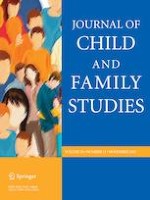22-02-2023 | Original Paper
Adverse Childhood Experiences and Alcohol Use Among U.S.-born and Immigrant Latinx Youth: The Roles of Social Support and Stress Hormones
Gepubliceerd in: Journal of Child and Family Studies | Uitgave 11/2023
Log in om toegang te krijgenAbstract
The biobehavioral correlates of Adverse Childhood Experiences (ACEs) among Latinx youth have been strikingly understudied. The purpose of this study was to (1) examine the effects of T-ACEs (e.g., maltreatment, family dysfunction) and E-ACEs (e.g., family deportation, community violence) in alcohol use, (2) test whether social support moderate these associations and (3) explore whether ACEs and alcohol use were related via adrenocortical hormones (i.e., cortisol, dehydroepiandrosterone [DHEA]). A total of 100 Latinx youth, between the ages of 13 and 19, participated in this study (53% female). Community samples of United States (U.S.)-born (N = 54) and immigrant Latinx (N = 46) youth provided morning saliva samples and completed self-report questionnaires. Results highlighted that for immigrant youth, social support buffered the effects of E-ACEs on alcohol use, F(9,89) = 3.34, p = 0.01, R2 = 0.25. Although our mediation hypothesis was not supported, the direct effects of T-ACEs (β = 0.25, t (94) = 2.21, p = 0.03) and E-ACES (β = −0.24, t (94) = −2.23, p = 0.03) on DHEA were significant for the entire sample. Preventing maltreatment and reducing community-level adversities seem critical for optimal child development, as exposure to these may increase alcohol use risk and affect HPA Axis functioning. Increasing extrafamilial support may be particularly salient for immigrant Latinx youth, as many experience extended immigration-related periods of separation from family members.
